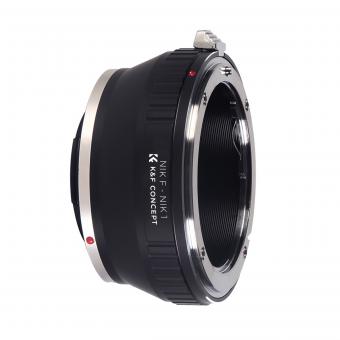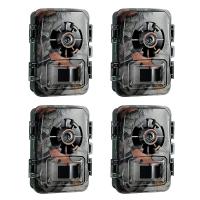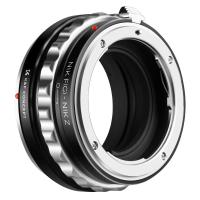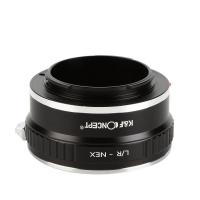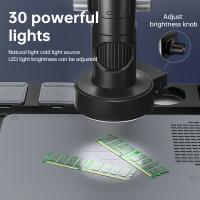How Do Transmission Electron Microscopes Work ?
Transmission electron microscopes (TEMs) work by passing a beam of electrons through a thin specimen to create an image. The electrons are emitted from a heated filament and accelerated by an electric field. They then pass through a series of electromagnetic lenses that focus and control the electron beam. The specimen is placed on a thin support film, allowing the electrons to pass through it.
As the electrons interact with the specimen, they undergo scattering, absorption, and diffraction. These interactions provide information about the structure and composition of the specimen. The scattered electrons are collected by a detector, which converts them into an electrical signal. This signal is then used to create an image on a fluorescent screen or a digital detector.
TEMs have high resolution capabilities, allowing for the visualization of extremely small details in the specimen. They can provide information about the atomic structure, crystallography, and chemical composition of materials. Additionally, TEMs can be used to study biological samples, such as cells and tissues, at the nanoscale level.
1、 Electron Beam Generation and Focusing
Transmission electron microscopes (TEMs) work by using a beam of electrons to image the specimen at a high resolution. The process involves several key steps, including electron beam generation and focusing.
Electron beam generation is achieved by using a heated filament to emit electrons. This filament, typically made of tungsten, is heated to a high temperature, causing the emission of electrons through a process called thermionic emission. These emitted electrons are then accelerated using a high voltage, typically in the range of 100-300 kilovolts, to form a high-energy electron beam.
Once the electron beam is generated, it needs to be focused onto the specimen. This is achieved using a series of electromagnetic lenses. These lenses consist of magnetic coils that generate magnetic fields, which can manipulate the path of the electrons. By adjusting the strength and configuration of these magnetic fields, the electron beam can be focused to a fine point.
The latest advancements in TEM technology have focused on improving the resolution and stability of the electron beam. For example, aberration correction techniques have been developed to correct for imperfections in the lenses, resulting in higher resolution imaging. Additionally, the use of field emission electron sources, such as cold field emission guns, has allowed for the generation of electron beams with higher brightness and coherence, further enhancing the imaging capabilities of TEMs.
In summary, transmission electron microscopes work by generating and focusing a high-energy electron beam onto a specimen. The latest advancements in electron beam generation and focusing have led to improved resolution and stability, allowing for more detailed imaging of specimens at the atomic scale.

2、 Specimen Preparation and Mounting
Transmission electron microscopes (TEMs) are powerful tools used to study the structure and composition of materials at the atomic level. They work by passing a beam of electrons through a thin specimen, which interacts with the specimen and produces an image.
Specimen preparation and mounting is a crucial step in TEM imaging. The specimen must be extremely thin (typically less than 100 nm) to allow the electrons to pass through it. This is achieved through a process called thinning, where the sample is mechanically or chemically reduced in thickness. The thinned specimen is then mounted on a TEM grid, which is a small, flat, and thin support structure.
In recent years, advancements in specimen preparation techniques have allowed for better imaging and analysis. For example, focused ion beam (FIB) milling has become a popular method for thinning specimens. FIB uses a beam of ions to selectively remove material from the sample, allowing for precise control over the thinning process. This technique is particularly useful for preparing cross-sectional samples, where the internal structure of a material can be examined.
Another recent development is the use of cryo-TEM, which involves freezing the specimen in a vitreous ice matrix. This technique preserves the sample in its native state, avoiding artifacts caused by chemical fixation or staining. Cryo-TEM has been instrumental in studying biological samples, such as proteins and viruses, at high resolution.
In summary, specimen preparation and mounting are critical steps in TEM imaging. Advances in techniques such as FIB milling and cryo-TEM have greatly improved the quality and versatility of TEM analysis. These developments continue to push the boundaries of what can be achieved with transmission electron microscopy.

3、 Electron-Beam Interaction with the Specimen
Transmission electron microscopes (TEMs) work by utilizing the interaction between an electron beam and the specimen being studied. The electron beam is generated by an electron gun and accelerated through a series of electromagnetic lenses. The beam is then focused onto the specimen, which is typically a thin slice of the material of interest.
As the electron beam passes through the specimen, it interacts with the atoms and electrons within the material. This interaction causes the electrons in the beam to scatter, and the resulting pattern of scattered electrons is collected by a detector. By analyzing the pattern of scattered electrons, detailed information about the structure and composition of the specimen can be obtained.
The latest point of view in the field of TEM is the development of aberration-corrected electron microscopy. This technique involves the use of specialized electromagnetic lenses that correct for aberrations in the electron beam, allowing for higher resolution imaging. Aberrations in the electron beam can cause blurring and distortion in the resulting images, limiting the level of detail that can be observed. Aberration correction techniques have significantly improved the resolution of TEMs, enabling researchers to study materials at the atomic scale.
In addition to imaging, TEMs can also be used for other analytical techniques such as electron diffraction and energy-dispersive X-ray spectroscopy. Electron diffraction involves directing the electron beam onto a crystalline sample, resulting in a diffraction pattern that can be used to determine the crystal structure of the material. Energy-dispersive X-ray spectroscopy involves detecting the X-rays emitted by the specimen when it is bombarded with the electron beam, providing information about the elemental composition of the material.
Overall, TEMs are powerful tools for studying the structure and composition of materials at the atomic scale, and advancements in aberration correction techniques continue to push the boundaries of what can be achieved with this technology.

4、 Image Formation and Magnification
Transmission electron microscopes (TEMs) are powerful tools used to visualize the ultrastructure of materials at the atomic level. They work by passing a beam of electrons through a thin specimen, which interacts with the specimen and forms an image on a fluorescent screen or a digital detector.
Image formation in TEMs is based on the principles of electron optics. The electron beam is generated by an electron gun and accelerated to high voltages, typically in the range of 100-300 kilovolts. The high voltage accelerates the electrons to high speeds, giving them a short wavelength, which allows for high-resolution imaging.
The electron beam is focused onto the specimen using a series of electromagnetic lenses. These lenses use magnetic fields to control the path of the electrons, similar to how glass lenses focus light in an optical microscope. The lenses can be adjusted to control the magnification and focus of the image.
As the electron beam passes through the specimen, it interacts with the atoms and electrons in the material. This interaction scatters the electrons, and the scattered electrons are then collected by a detector. The intensity of the scattered electrons is used to form an image of the specimen.
To achieve high magnification, TEMs use a technique called electron magnification. This involves using a series of lenses to magnify the image formed by the scattered electrons. The magnified image is then projected onto a fluorescent screen or captured by a digital detector.
In recent years, advancements in TEM technology have allowed for even higher resolution imaging. Techniques such as aberration correction and electron holography have been developed to overcome limitations in image quality and provide more detailed information about the specimen's structure and properties.
Overall, TEMs have revolutionized our understanding of materials and biological systems by allowing us to visualize their atomic structure and study their properties at the nanoscale.









